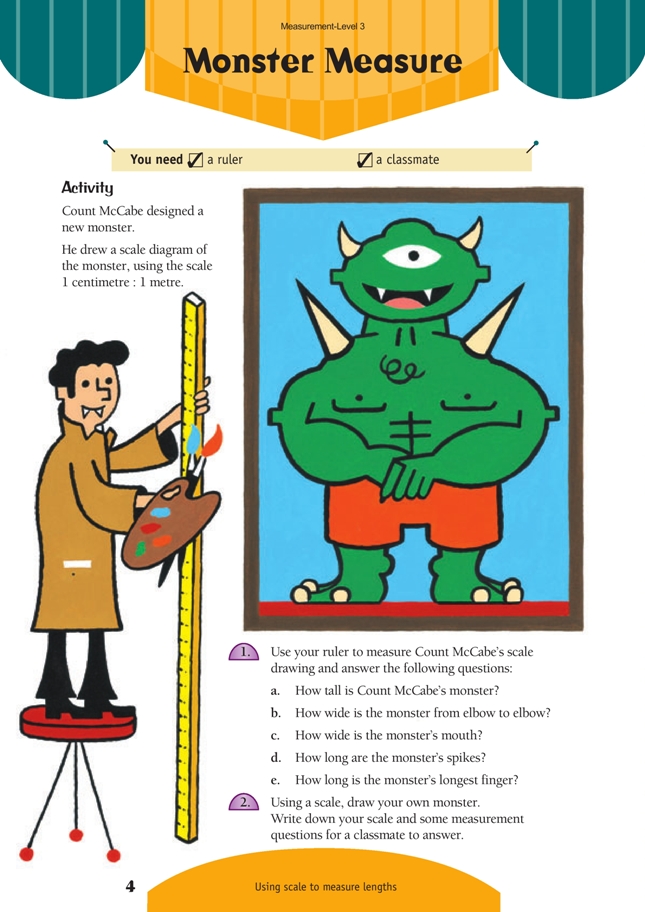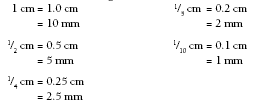This is a level 3 measurement strand activity from the Figure It Out series.
A PDF of the student activity is included.
Click on the image to enlarge it. Click again to close. Download PDF (255 KB)
use scales to measure length
ruler
classmate
In this activity, students will need to be able to measure accurately in centimetres and millimetres and to calculate using a scale.
If students are having difficulty drawing their own monster accurately, give them some centimetre square grid paper. Take the opportunity to build a strong understanding of the relationship between centimetres and millimetres by helping students convert 0.5 and 0.25 centimetres to millimetres. Compare the millimetre scale on their 30 centimetre ruler or on a metre ruler with the centimetre scale. A table of equivalences would make a good chart for the classroom wall:
You might like to relate the prefix centi- to the metre unit and highlight other words that refer to 100 by using “cent” as a prefix or syllable, for example, century, percent, dollars and cents. You could compare the prefix “mille” in millennium to the prefix “milli” in millimetre and point out the connection to 1 000.
It may be worth discussing with students why we have different units of measure like metres, centimetres, and millimetres. The choice of unit depends mainly on the degree of accuracy needed to complete the measuring task. The special relationship of 10 that connects the units of measure in our metric system can be used to reinforce our place value system. Introduce students to the decimetre (dm) to complete the unit of measure number pattern:
10 mm = 1 cm
10 cm = 1 dm
10 dm = 1 m
Answers to Activity
1. a. 12.5 m
b. 9.5 m
c. 3 m
d. 3 m
e. 1.5 m
2. Answers will vary.

